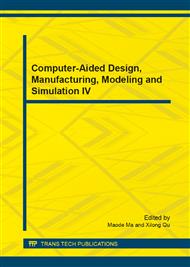p.971
p.976
p.981
p.985
p.991
p.996
p.1001
p.1006
p.1010
Heat Conduction Analysis on the Evaporator in Gravity Heat Pipe of Heavy Oil Wellbore
Abstract:
A technology for using petroleum deposit’s energy and the principle of medium’s phase change heat transfer to make hollow rod into heat pipe, which transferred heat from bottom to top in wellbore by using it without extra energy is proposed. It can improve the temprature distribution of the fluid at the upper part of wellbore; therefore paraffin deposition and flocculation are improved. In this paper, heat transfer model of liquid film and liquid pool is established by means of the equation of N-S.Based on the principle of micro unit in liquid film’s thermal equilibrium and liquid pool’s heat transfer.By analying the heat transfer coeffcients of this two part,it was found out that gravity heat pipe had better heat transfer performance with increasing the length of liquid film in evaporator,improving the flow rate of inner steam and strengthening nucleate boiling of liquid pool,when the requirement of the continuous circulation of two-phase flow was achieved.
Info:
Periodical:
Pages:
991-995
Citation:
Online since:
October 2014
Authors:
Price:
Сopyright:
© 2014 Trans Tech Publications Ltd. All Rights Reserved
Share:
Citation:


